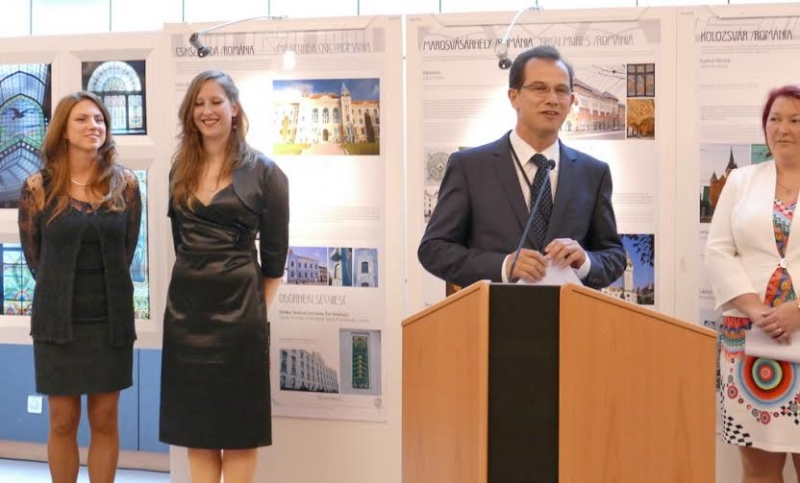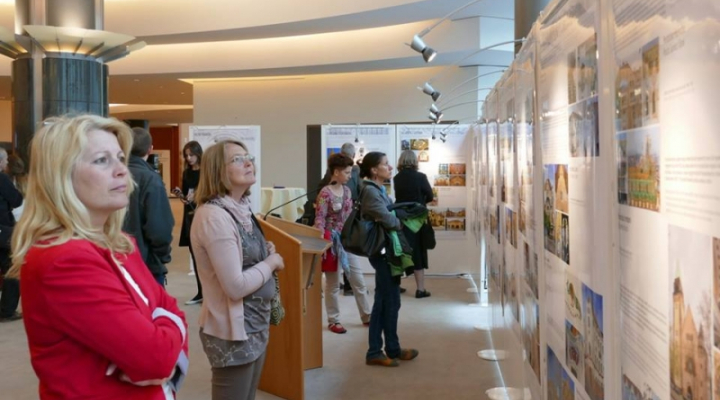Hungarian Art Nouveau Architecture in Europe
MEP Csaba Sógor opened a new exhibition entitled Hungarian Art Nouveau architecture in Europe on the 26th of May in the European Parliament. The exhibition showcases prominent buildings of several Central and Eastern European cities representing the Art Nouveau style, part of the Hungarian architectural heritage.
The aim of the exhibition opened on the Art Nouveau World Day was to present the gems of the still unknown Hungarian Art Nouveau Architecture in Western Europe. These buildings are not only similar to the ones built in Belgium, France or Germany at the same time, but are also of equivalent artistic value. The exhibition is composed of photographs, area installations, building models and projections which introduce visitors into the world of the Art Nouveau, showing buildings from several Transylvanian cities such as: Oradea, Cluj-Napoca, Târgu-Mureș, Odorheiu-Secuiesc, and Miercurea-Ciuc. The exhibition was curated by Linda Papp and Lilla Zambo using Zoltán Bagyinszki’s photographs.


“The Art Nouveau World Day directs attention to this great Hungarian heritage that can be found today in six European countries”- said RMDSZ MEP Csaba Sógor at the opening of the exhibition. The MEP stressed the symbolic value of the fact that representatives of five of these six countries were present at the event: MEPs Andrea Bocskor from Ukraine, Pál Csáky and József Nagy from Slovakia, József Szájer from Hungary and Andor Deli from Vojvodina, Serbia. "The Hungarian architectural heritage is a European heritage and it is our duty, the MEPs of Hungarian origin of these states to represent these common values" – explained Csaba Sógor.
Referring to the publication entitled Art Nouveau in Cluj-Napoca the MEP also stated that the Hungarian Art Nouveau motives's roots reach back in history. "Art teacher József Huszka from Sfântu-Gheorghe found a clear correlation between the Szekler gates, the tree of life architectural motifs and exotic oriental art. His theory mostly influenced the architecture of Ödön Lechner, who was a pioneer in the creation of the Hungarian Art Nouveau style, an architect we should remember today." Csaba Sógor also pointed out that, although some of these buildings survived World War II and the Communist regime and shine today in their state of old splendour, sadly some are in dire need of urgent renovation. This is why the exhibition aims to draw European public attention to the importance of protecting this valuable Hungarian Art Nouveau architectural heritage.











